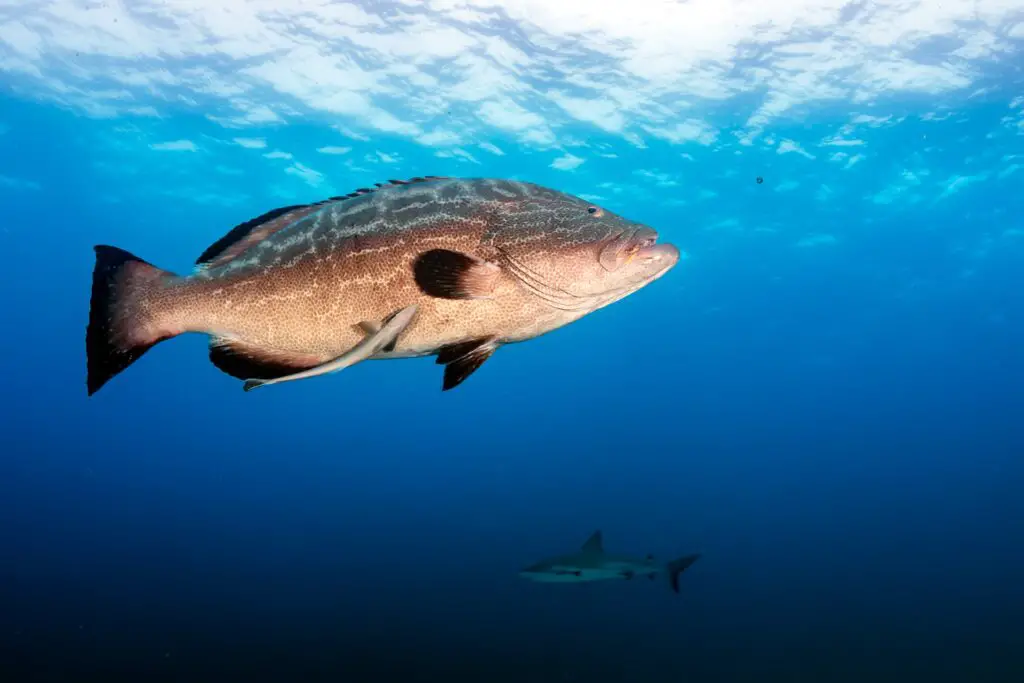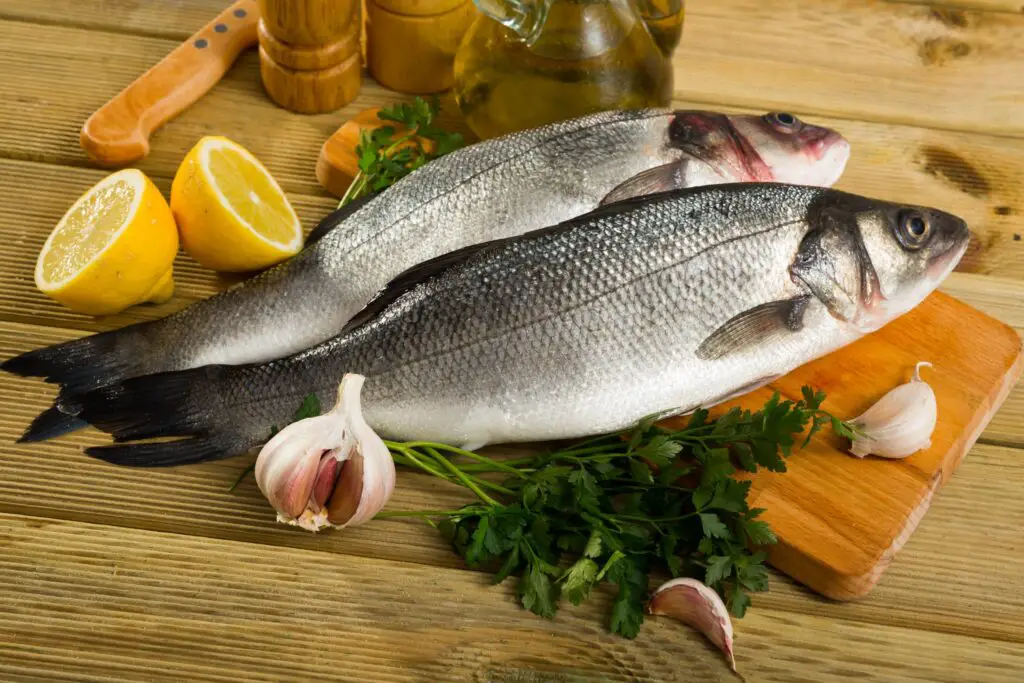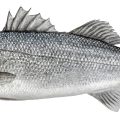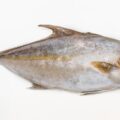Branzino and grouper are members of the same fish family and share certain traits. The European bass is a white fish that is also called branzino. It lives in the seas off the southern and western coasts of Europe and the northern coast of Africa. It is often used in Italian cooking. Grouper is the name for any fish in the family Serranidae, which also includes sea bass. The name is thought to have come from the Portuguese word “garoupa,“ which means “fish.” These fish have giant mouths for their gills and massive bodies.
Branzino VS Grouper: Taste
Grouper is a type of fish that is often thought to be pricier than branzino. However, some critical differences between the two fish can help you determine which is the better choice for your meal.
Flavor-wise, grouper falls between bass and halibut, yet it is still distinct. Even though there are small differences in size, species, and harvest location, grouper has the same taste and texture. Compared to black grouper, the flavor of red grouper is more subtle and pleasant.
Branzino has a mild flavor, a flaky texture, and a mildly sweet aftertaste that is remarkably similar to that of sea bass and halibut. Standard preparation involves serving the whole fish with lemon wedges. Branzino flesh becomes opaque white when cooked, from a pinkish hue when raw. The meat has a delicate, flaky texture and a subtle sweetness. According to many chefs, wild-caught bass has a richer flavor than its farmed counterpart. Finally, grouper has a more robust flavor profile than branzino, making it ideal for those who prefer stronger flavors in their seafood dishes.

Grouper vs. Branzino: Location and Habitat
Groupers can be any of several genera in the subfamily Epinephelinae of the family Serranidae, which is in the order of Perciformes. The Gulf of Mexico and the Florida Keys in the United States, the Bahamas, much of the Caribbean, and the Brazilian coast are all under Grouper’s normal area that it inhabits. Off the coast of Massachusetts and Maine, goliath grouper have been snagged on rare occasions.
During the summer months, the Branzino (Dicentrarchus labrax) can be found in the shallow coastal waters and river mouths of its native western and southern Europe and the northern shores of Africa. The Moronidae family is made up of six known species, which are all called temperate basses.
Estuaries, lagoons, coastal waters, and rivers in the eastern Atlantic Ocean, from southern Norway to Senegal, are great places for European bass to live. The southern part of the Black Sea and the Mediterranean both have it, while the Baltic Sea does not, because of seasonal migration. This species moves closer to the coast and farther north in the summer.
Commercial fishermen and farmers harvest and cultivate this branzino, which is widely known as the most significant Mediterranean fish farmed today. Sea bass, or European bass, is a common name for various restaurant-friendly fish in the United Kingdom and Ireland. Branzino is one of its many Italian names and is the most commonly used in North America.

Branzino VS. Grouper: Price
There are subtle but significant price differences between a grouper and a branzino. Here’s what you need to know:
Since their preferred environment is less accessible, domestic grouper is more challenging to catch. For this reason, and especially when considering the current level of demand, their prices tend to be higher. It’s common for a whole grouper to sell at wholesale for $6 or $9 per pound, but consumers will only pay about $12 at the register. There are situations where grouper is farm raised.
Native to the waters off the coastlines of western and southern Europe and the northern coasts of Africa, branzino is a stunning white fish known as European sea bass or Mediterranean Sea bass. Branzino’s delicate, sweet flavor and flaky white flesh pair well with a wide range of seasonings. The normal price for it is around $15.99 / Pound. The Mediterranean Seabass is another popular species. Generally speaking, the Bronzini (or Bronzino) has a comparable consistency to the Black Seabass.
Branzino VS Grouper: Lifespan
Most groupers mature at a snail’s pace, and their lifespans range from 5 to 15 years. For several widespread species, reproductive maturity typically occurs between 30 and 50. Goliath groupers have a maximum known age of at least 37 years, making them a long-lived species. Once widespread throughout the Atlantic Ocean’s tropical and subtropical seas, including both Florida coastlines, the Gulf of Mexico, the shores of Brazil, and the Caribbean, goliath grouper are now only found in the western Atlantic.
It can take a branzino up to 7 years to reach the minimum commercially relevant size (MCRS) (42 cm). As a result, they are susceptible to being overfished. An estimated 25 years of lifespan is possible with them.
Branzino VS Grouper: Appearance
Groupers belong to the teleost fish family and have a stocky build and a wide mouth. They are not designed for swimming for extended distances at high speeds. Depending on the species, they can grow over a meter in length. Although species of this genus vary significantly in size, the Atlantic goliath grouper (Epinephelus itajara) has been measured at 399 kilograms (880 pounds) and 2.43 m (7 ft 11+12 in) in length, making it the largest of its genus. Instead of biting off portions of their prey, they swallow them whole.
Fish, octopuses, and crustaceans are staples in their diet. While some animals are active predators, others prefer to ambush their victims. The Goliath grouper (Epinephelus lanceolatus) is one of the largest fish in the world. However, there have been unsubstantiated reports of fatal assaults on people by this species.
Branzino, also known as European bass, is a slow-growing fish that needs several years to mature. A mature Branzino typically tips the scales at about 5 kg (11 lb). The maximum size for a European bass is 1 m (3 ft 3 in) long and 12 kg (26 lb), but the average size is much smaller (1 ft 8 in). The front of an individual is a silvery grey, and the back might be a dark bluish color. The juveniles swim in schools and eat invertebrates, whereas the adults are solitary and prey on other fish. For food, branzino prefers crustaceans and invertebrates like prawns and crabs.
Branzino VS Grouper: Cooking Style
Grilling, steaming, or baking a whole branzino is a delicious option due to the fish’s small size and lack of significant bones. Bake at 325F for about 25 minutes and after baking, let rest for 5 minutes. Then, serve on a dish with citrus segments and more herbs for decoration.
You should use lots of freshly squeezed lemon juice, herbs, or a dry rub to season the fish if you’re steaming it. You can flake fish that has already been cooked into a meal right before being served. Branzino is ideal for one-pot foods like stews, casseroles, and pasta dishes because it flakes easily into bite-sized pieces.
Grouper is a magnificent fish that can be prepared in many ways, but one of the most common is to pan-fry it. Once the filets have been thawed, blot them dry with paper towels and then rub them with olive oil, butter, and any other seasonings you choose. Then, add a half-inch of oil to a cast-iron or thick-bottomed pan and heat it over high heat.
Conclusion
Grouper and branzino are two types of fish that you can find in many seafood restaurants. Some physical and behavioral similarities exist between sea bass and grouper because they are both members of the same fish family.
Groupers and sea bass are both tasty and tender fish. However, sea bass has more delicious flesh than grouper. The meat of both of these fishes is exceptionally tender and flaky, much like butter, making them a better choice for those who want their meal to come with more flavor. Additionally, groupers tend to be cheaper than branzino, making them an excellent option for budget-minded diners.











